Solar eclipse of October 21, 1949
A partial solar eclipse occurred on October 21, 1949. A solar eclipse occurs when the Moon passes between Earth and the Sun, thereby totally or partly obscuring the image of the Sun for a viewer on Earth. A partial solar eclipse occurs in the polar regions of the Earth when the center of the Moon's shadow misses the Earth.
| Solar eclipse of October 21, 1949 | |
|---|---|
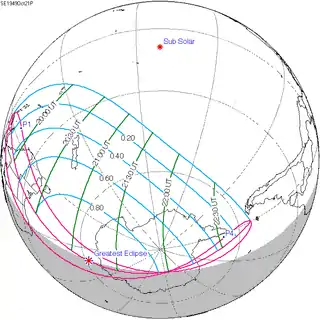 Map | |
| Type of eclipse | |
| Nature | Partial |
| Gamma | -1.027 |
| Magnitude | 0.9638 |
| Maximum eclipse | |
| Coordinates | 61.5°S 107.5°E |
| Times (UTC) | |
| Greatest eclipse | 21:13:01 |
| References | |
| Saros | 152 (9 of 70) |
| Catalog # (SE5000) | 9397 |
Related eclipses
Solar eclipses 1946–1949
This eclipse is a member of a semester series. An eclipse in a semester series of solar eclipses repeats approximately every 177 days and 4 hours (a semester) at alternating nodes of the Moon's orbit.[1]
| Ascending node | Descending node | |||
|---|---|---|---|---|
| 117 | May 30, 1946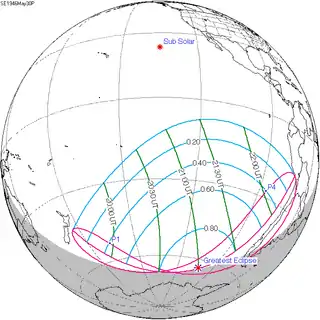 Partial |
122 | November 23, 1946 Partial | |
| 127 | May 20, 1947 Total |
132 | November 12, 1947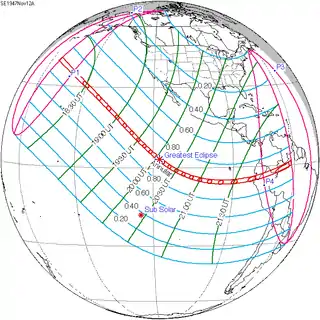 Annular | |
| 137 | May 9, 1948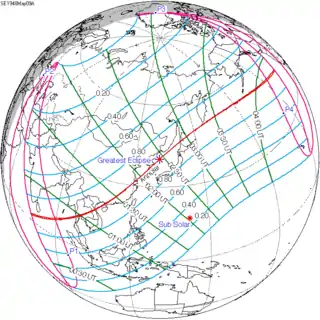 Annular |
142 | November 1, 1948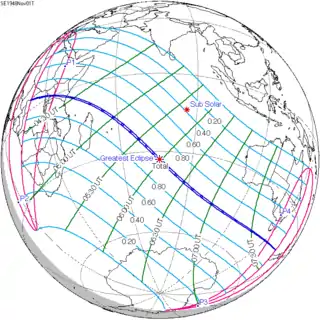 Total | |
| 147 | April 28, 1949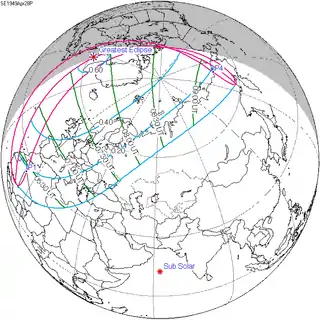 Partial |
152 | October 21, 1949 Partial | |
References
- van Gent, R.H. "Solar- and Lunar-Eclipse Predictions from Antiquity to the Present". A Catalogue of Eclipse Cycles. Utrecht University. Retrieved 6 October 2018.
External links
- Earth visibility chart and eclipse statistics Eclipse Predictions by Fred Espenak, NASA/GSFC
This article is issued from Wikipedia. The text is licensed under Creative Commons - Attribution - Sharealike. Additional terms may apply for the media files.
.jpg.webp)

